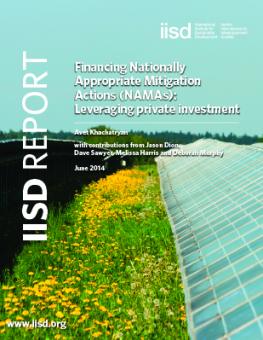
Financing Nationally Appropriate Mitigation Actions (NAMAs): Leveraging private investment
An animated infographic for this paper can be found here.
Sustainable financing of NAMAs in many cases ultimately requires blending funds from public and private sources, so it is essential that NAMA developers try to maximally leverage private investment. But the question of how to do so in practice can be complex. This report offers guidance to developing country NAMA practitioners and NAMA funders seeking to leverage private investment in their NAMA projects. Drawing on case studies, it identifies six key aspects crucial to developing bankable NAMAs and offers guidance on risk mitigation policies that can be instituted to increase NAMAs’ bankability. The paper also offers a set of specific recommendations for both practitioners and donors looking to maximize private investment in their NAMAs.
Participating experts
You might also be interested in
December 2024 | Carbon Minefields Oil and Gas Exploration Monitor
In November 2024, 23 oil and gas exploration licences were awarded across five countries, with Russia granting the licences that account for the largest portion of embodied emissions.
Increased Support Needed to Achieve India's Clean Energy Goals
India is on track to achieve many of its 2030 clean energy goals but needs to step up government support measures to accelerate the deployment of offshore wind, electric vehicles, and green hydrogen, according to a new report.
Budgeting for Net Zero
This study estimates the cost gap for battery energy storage systems (BESSs), offshore wind, solar photovoltaic (PV), electric vehicles (EVs), and green hydrogen (GH2) to inform government support.
Artisanal and Small-Scale Mining of Critical Minerals
This report examines the potential for artisanal and small-scale mining (ASM) to take an expanded role in the global supply of critical minerals.